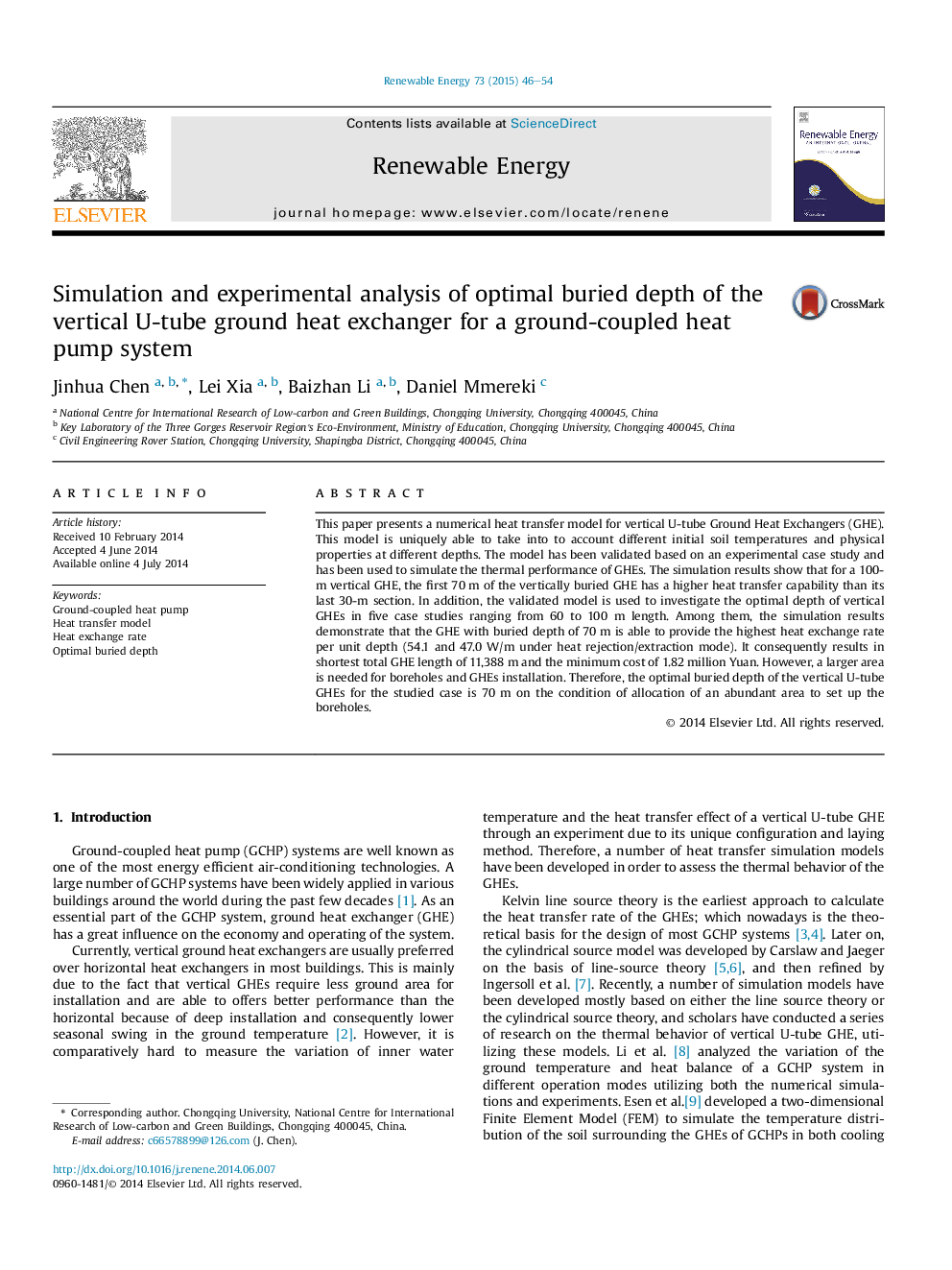| Article ID | Journal | Published Year | Pages | File Type |
|---|---|---|---|---|
| 6767793 | Renewable Energy | 2015 | 9 Pages |
Abstract
This paper presents a numerical heat transfer model for vertical U-tube Ground Heat Exchangers (GHE). This model is uniquely able to take into to account different initial soil temperatures and physical properties at different depths. The model has been validated based on an experimental case study and has been used to simulate the thermal performance of GHEs. The simulation results show that for a 100-m vertical GHE, the first 70Â m of the vertically buried GHE has a higher heat transfer capability than its last 30-m section. In addition, the validated model is used to investigate the optimal depth of vertical GHEs in five case studies ranging from 60 to 100Â m length. Among them, the simulation results demonstrate that the GHE with buried depth of 70Â m is able to provide the highest heat exchange rate per unit depth (54.1 and 47.0Â W/m under heat rejection/extraction mode). It consequently results in shortest total GHE length of 11,388Â m and the minimum cost of 1.82 million Yuan. However, a larger area is needed for boreholes and GHEs installation. Therefore, the optimal buried depth of the vertical U-tube GHEs for the studied case is 70Â m on the condition of allocation of an abundant area to set up the boreholes.
Related Topics
Physical Sciences and Engineering
Energy
Renewable Energy, Sustainability and the Environment
Authors
Jinhua Chen, Lei Xia, Baizhan Li, Daniel Mmereki,
